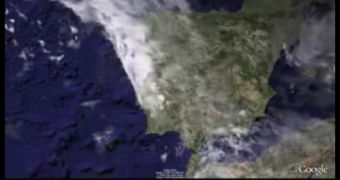Google has recently announced the release of a new art-related layer for Google Earth that will enable users to explore very detailed representations of several paintings from the Museo Nacional del Prado in Madrid. This location is one of the most popular destinations for tourists who visit Spain, and the new layer will surely increase its popularity, since people will be able to admire various paintings with only several mouse clicks, from the coziness of their computer screen. Furthermore, the Prado layer will also include 3D models, which will permit users to virtually “fly” around the buildings and feel as if they were actually inside.
The photographic images in question are fourteen in number and they have been scanned at an amazing resolution to meet the requirements of such an endeavor: the Prado Museum has become the first one to have provided access and exploration of its gallery within Google Earth.
All those who choose to use this application will only need to zoom in and analyze the finest details of the artist's brushwork that even art historians or professors could miss. After having been photographed, the fourteen works of art can contain up to 14,000 million pixels (14 gigapixels), and this high performance allows users to observe tiny details such as a little insect on a flower (in The Three Graces), or subtle tears on people's faces (in The Descent from the Cross).
You can access the newly-introduced layer in the designated pane under “Geographic Web -> Preview -> Museo de Prado.” Then, activate the layer and select the place mark corresponding to Prado Museum, and this action will take you to the museum. You will need to ensure that the 3D Buildings layer is enabled, to open up the possibility of having a three-dimensional view of the museum's exterior. The final step involves selecting the place mark “Museo Nacional del Prado,” and you can visualize the 14 thumbnails chosen to be a part of Google Earth (representatives claim it has been quite difficult to settle for only fourteen items, but they are supposed to be the best ones in the exhibition).
To put it in more simple words, the innovative layer will simply require you to select a painting that most interests you, then to click on its corresponding thumbnail to locate it inside the museum and admire its high-res representation. You can zoom in to take a closer look at all the details that make a simple painting a true masterpiece – brush strokes, textures, and canvas structure.

 14 DAY TRIAL //
14 DAY TRIAL //